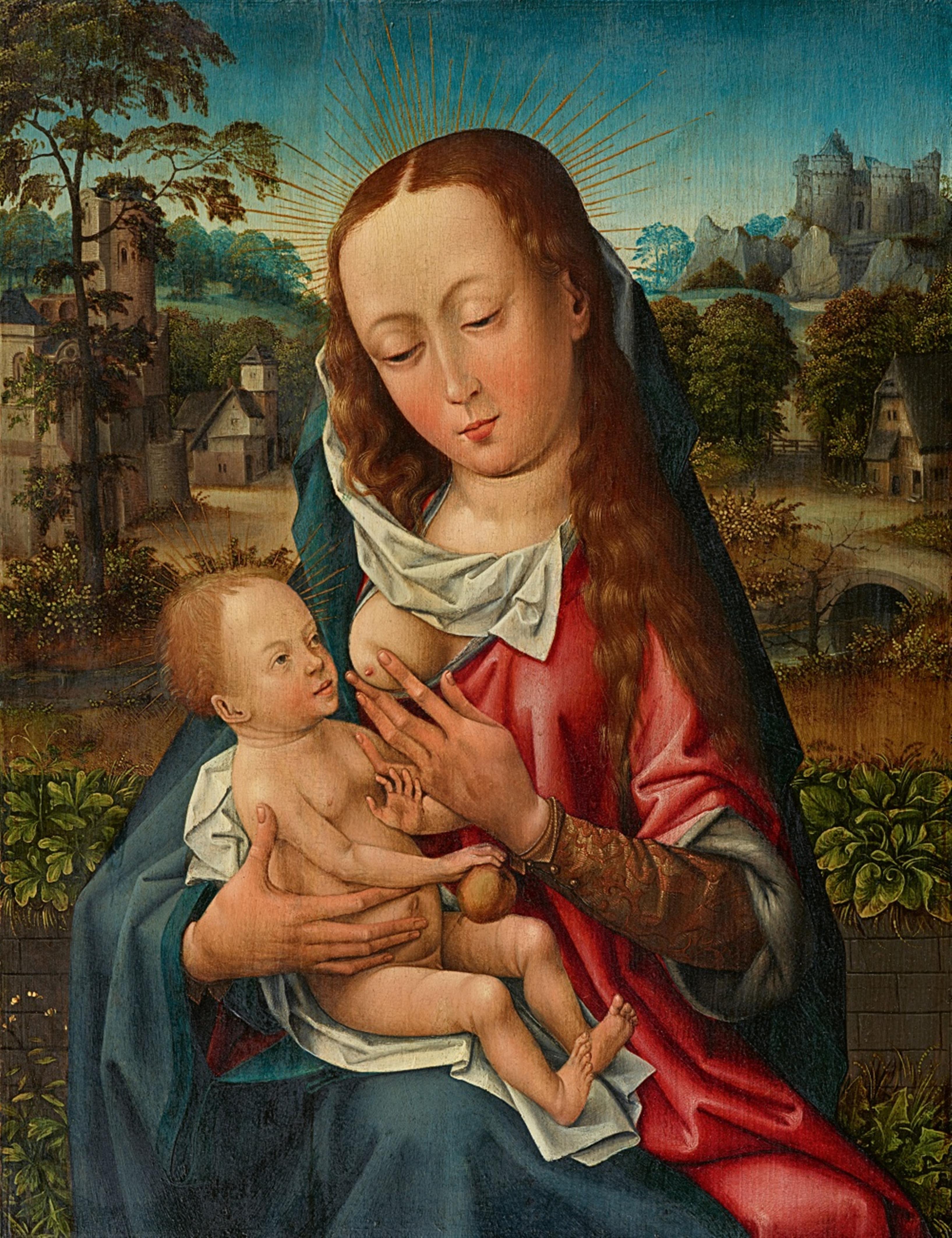Rogier van der Weyden, follower of
The Virgin and Child
Oil on oak panel. 48 x 37 cm.
Rogier van der Weyden's œuvre reveals the master as the most inventive early Netherlandish painter in the 15th century, creating works of art which served as for decades onwards by his workshop and followers. Among his creations the Virgo lactans or Nursing Madonna turns out to have been one of the most popular themes used for private devotion, sometimes associated with a donor portrait in the format of a diptych.
The present panel is a fine example of a pictorial type highly appreciated on the art market in Bruges and Brussels. The various surviving versions of this beloved image single out from each other by their style, setting, ornaments and technique. According to the price paid by the patron the figures were either set in a prestigious surrounding, before a landscape or just simply in front of a monochrome background.
In Bruges such examples can be found among others by the Master of the Legend of Saint Ursula where the Virgin appears crowned in heaven before a gold ground (Aachen, Suermondt-Ludwig-Museum; Worcester, Art Museum) in the circle of Gerard David (Madrid, Museo Lázaro Galdiano, inv. no. 3049) by Adriaen Isenbrant and Ambrosius Benson, or even on a manuscript painting from the Ghent-Bruges school (Sale Romantic Agony, Brussels, 14 June 2008, lot 951).
At the end of the 15th and early 16th centuries in Brussels - home town of Van der Weyden - painters were all working under his strong stylistic influence. Among them were the Master of the Embroidered Foliage and the Master of the Legend of Saint Catherine. The National Museum in Stockholm houses A Virgin nursing the Child holding an apple (inv. no. NM 6179) which has been attributed to the latter. Compared with the present composition it shows a clear stylistic relationship. But while the Swedish panel belongs to the 15th century gothic style, the present painting bears witness to the 16th century style with its much more realistic treatment of the landscape, the in-depth perspective and its painting technique using white lead in modelling the figures.
Apart from the presence of a landscape the Marian icon fits perfectly into the original Rogerian tradition. The Virgin and Infant Christ are depicted in a close-up view in front of a hilly landscape near a village with a medieval castle at the far distance. A small river meanders parallel between the hamlet and the group. Her head slightly inclined to the left, the Virgin Mary prepares to nurse the Child with Her left hand while holding Him in Her lap with the other. She sits before a low stone wall covered with foliage. The Child's left hand is raised while the right holds a small apple and both Mary and Jesus have a halo around their heads. She wears a cloak and a red overdress lined with grey fur. Her armlets are of gold brocade with golden buttons at the wrists. It bears no doubt that the Brussels art market would have indeed appreciated such a blend of spiritual power and motherly imagery set in nature's peaceful backdrop, to adorn one's private home.
Provenance
With Jacques Leegenhoek, Paris, 1984.
Literature
Corinna Peuckert, in: Ekkehard Mai (ed.): Das Kabinett des Sammlers, Cologne 1993, pp. 45-7, no. 18, reproduced.

